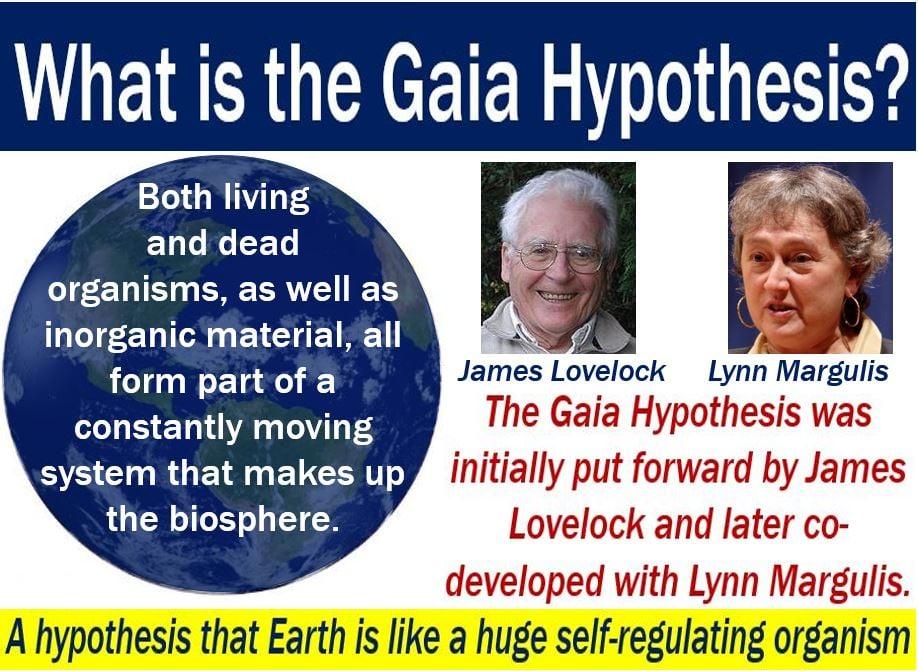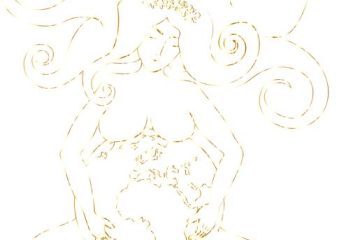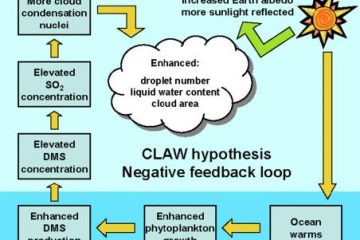In the vast tapestry of the universe, there exists a delicate balance that sustains life itself. The Gaia Hypothesis, a thought-provoking concept that intertwines science and philosophy, offers a unique perspective on the interconnectedness of all living beings on our planet. Join us on a journey to explore this intriguing theory in a brief yet enlightening exploration of Gaia and her profound implications for our world.
Table of Contents
- Exploring the Gaia Hypothesis: A Brief Overview
- Unveiling the Interconnectedness of Earth’s Systems
- Implications of the Gaia Hypothesis for Environmental Conservation
- Embracing Gaia: Practical Steps for Sustainable Living
- Q&A
- Final Thoughts
Exploring the Gaia Hypothesis: A Brief Overview
The Gaia Hypothesis proposes that the Earth functions as a self-regulating system, maintaining conditions suitable for life. This intriguing concept suggests that the planet itself behaves like a living organism, where biological processes interact with the physical environment to create a complex and balanced ecosystem. At its core, the Gaia Hypothesis challenges traditional views of Earth as a passive entity and instead, portrays it as an active participant in sustaining life.
One of the key principles of the Gaia Hypothesis is the idea that living organisms interact with their surroundings to influence and regulate environmental conditions. This interconnectedness between life forms and their environment showcases the intricate web of relationships that shape the Earth’s dynamics. From the regulation of atmospheric gases to the stabilization of temperature, the Gaia Hypothesis highlights the delicate balance that exists within the biosphere. In essence, it underscores the profound interdependence between living organisms and their habitat, painting a holistic picture of Earth as a harmonious and self-sustaining entity.
Unveiling the Interconnectedness of Earth’s Systems
The intricate web of nature’s interconnectedness is a marvel to behold, with ecosystems, climates, and life forms harmoniously intertwined in a dance of equilibrium. From the majestic oceans to the towering mountains, every element plays a vital role in maintaining the delicate balance of Earth’s systems. Witnessing this symphony of connections reminds us of the profound Gaia hypothesis, proposing that our planet is a self-regulating organism where all living beings and their environments are part of a single, unified entity.
Key Points to Consider:
- Ocean-Atmosphere Interaction: The exchange of gases and energy between the ocean and the atmosphere influences weather patterns and climate stability.
- Biodiversity’s Crucial Role: Diverse ecosystems support each other through intricate food webs, nutrient cycles, and species interactions.
In the grand tapestry of Earth’s systems, every thread is essential, weaving a story of interdependence and resilience that underscores the beauty and complexity of our planet. By embracing the interconnectedness of all life forms and natural processes, we gain a deeper appreciation for the intricate web of relationships that sustain our world.
Implications of the Gaia Hypothesis for Environmental Conservation
From the depths of scientific inquiry emerges a theory that challenges conventional wisdom about the interconnectedness of our planet. The Gaia Hypothesis, proposed by James Lovelock, suggests that Earth functions as a self-regulating organism, maintaining conditions suitable for life. This radical concept posits that the planet’s biosphere, atmosphere, oceans, and geology are all intricately linked in a complex web of interactions.
In the realm of environmental conservation, embracing the principles of the Gaia Hypothesis can have profound implications. By recognizing the Earth as a living system, we are compelled to view conservation efforts through a holistic lens. Preserving biodiversity becomes not just a matter of protecting individual species but safeguarding the delicate balance of ecosystems. Promoting sustainable practices that support the planet’s self-regulatory mechanisms can help mitigate the impact of human activities on the environment, fostering harmony between humanity and nature.
Embracing Gaia: Practical Steps for Sustainable Living
In our journey towards sustainable living, the Gaia hypothesis offers a profound perspective on the interconnectedness of all life forms on Earth. Embracing this holistic view can guide us towards harmonious coexistence with our planet. By taking practical steps inspired by the Gaia hypothesis, we can contribute to a healthier and more balanced world.
Practical Steps for Sustainable Living:
- Minding Water Usage: Be mindful of your water consumption by fixing leaks, using water-saving appliances, and harvesting rainwater for non-potable uses.
- Committing to Recycling: Sort waste properly, reduce single-use plastics, and opt for products with minimal packaging to lessen environmental impact.
- Cultivating Green Spaces: Create a sustainable garden with native plants, composting organic waste, and supporting local wildlife habitats.
- Choosing Renewable Energy: Transition to renewable energy sources like solar or wind power to decrease reliance on fossil fuels and reduce carbon emissions.
Living in harmony with Gaia involves conscious choices and daily actions that prioritize the well-being of our planet. By aligning our lifestyles with the principles of sustainability and interconnectedness, we can work towards a more vibrant and resilient Earth for future generations. Let’s embark on this transformative journey together, honoring Gaia with each eco-friendly decision we make.
Q&A
Q&A: Exploring the Gaia Hypothesis
Q: What is the Gaia Hypothesis all about?
A: The Gaia Hypothesis proposes that Earth is a self-regulating organism, where the biosphere and physical components interact to maintain conditions suitable for life.
Q: Who came up with the Gaia Hypothesis?
A: The Gaia Hypothesis was formulated by renowned scientist James Lovelock and microbiologist Lynn Margulis in the 1970s.
Q: How does the Gaia Hypothesis differ from traditional views of Earth?
A: Unlike traditional views that see Earth as a passive backdrop for life, the Gaia Hypothesis suggests that the planet itself behaves like a living organism.
Q: What evidence supports the Gaia Hypothesis?
A: Evidence supporting the Gaia Hypothesis includes the regulation of atmospheric composition, temperature control, and nutrient cycling, suggesting an interconnected system.
Q: What implications does the Gaia Hypothesis have on our understanding of Earth’s systems?
A: The Gaia Hypothesis challenges us to see Earth as a complex and interconnected system, highlighting the interdependence of living organisms and the environment.
Q: How is the Gaia Hypothesis relevant in today’s world?
A: In today’s world facing environmental challenges, the Gaia Hypothesis reminds us of the importance of understanding and preserving the delicate balance of life on Earth.
Q: Can individuals make a difference in supporting the principles of the Gaia Hypothesis?
A: Absolutely! By adopting sustainable practices, reducing waste, and supporting conservation efforts, individuals can contribute to maintaining Earth’s health and balance.
Final Thoughts
As we delve into the intricate web of the Gaia Hypothesis, we unlock a world where interconnectedness reigns supreme. From the tiniest microorganism to the vast expanses of the oceans and forests, the heartbeat of Gaia pulses through it all. Let’s continue to nurture our planet, embodying the spirit of Gaia in our daily lives. Together, we can create a harmonious balance that sustains life for generations to come. Embrace the unity of Gaia and let its wisdom guide us on a journey towards a brighter, more sustainable future.



0 Comments